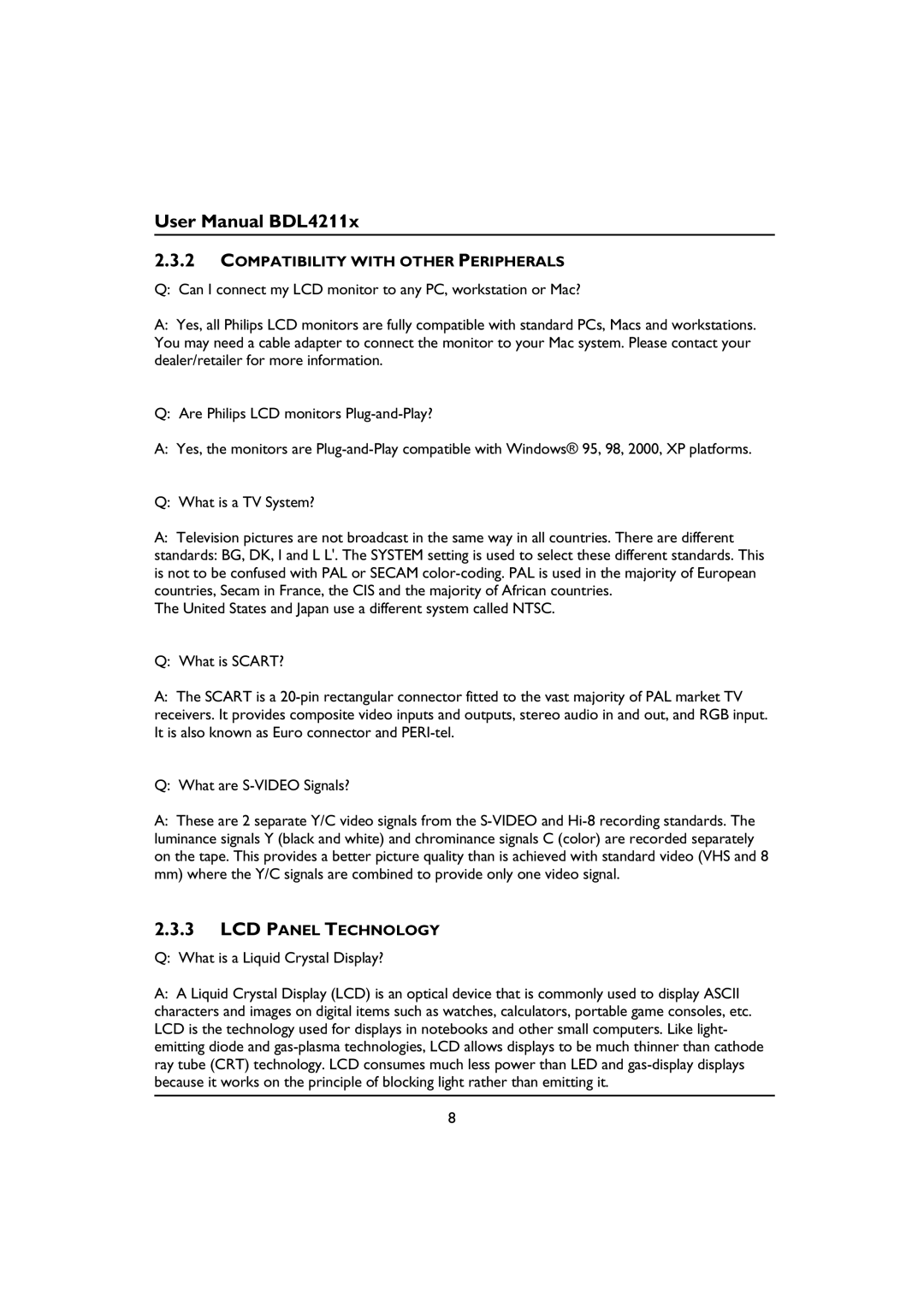
User Manual BDL4211x
2.3.2COMPATIBILITY WITH OTHER PERIPHERALS
Q: Can I connect my LCD monitor to any PC, workstation or Mac?
A:Yes, all Philips LCD monitors are fully compatible with standard PCs, Macs and workstations. You may need a cable adapter to connect the monitor to your Mac system. Please contact your dealer/retailer for more information.
Q: Are Philips LCD monitors
A: Yes, the monitors are
Q: What is a TV System?
A:Television pictures are not broadcast in the same way in all countries. There are different standards: BG, DK, I and L L'. The SYSTEM setting is used to select these different standards. This is not to be confused with PAL or SECAM
The United States and Japan use a different system called NTSC.
Q: What is SCART?
A:The SCART is a
Q: What are
A:These are 2 separate Y/C video signals from the
2.3.3LCD PANEL TECHNOLOGY
Q: What is a Liquid Crystal Display?
A:A Liquid Crystal Display (LCD) is an optical device that is commonly used to display ASCII characters and images on digital items such as watches, calculators, portable game consoles, etc. LCD is the technology used for displays in notebooks and other small computers. Like light- emitting diode and
8
